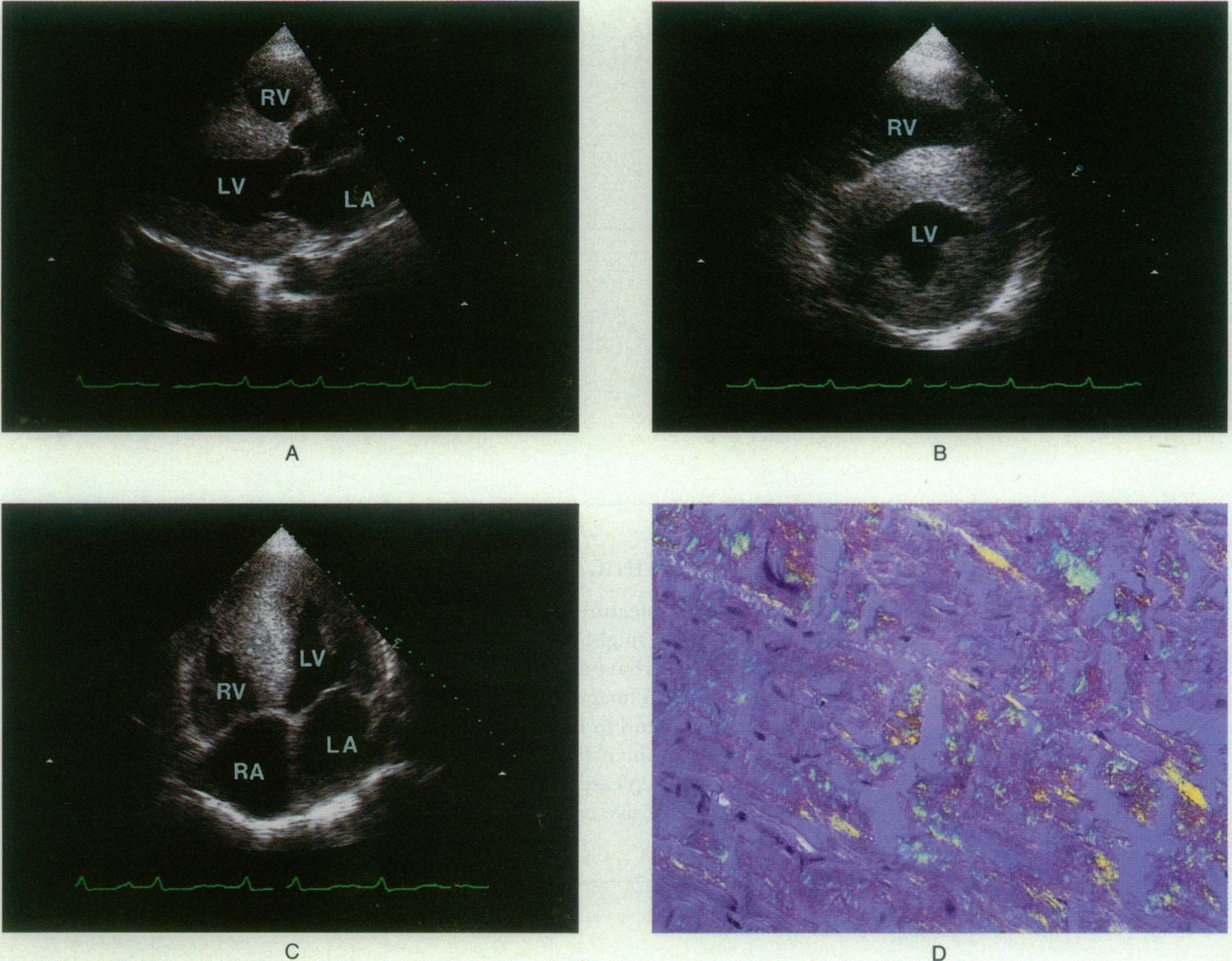You examine a 55-year-old man who present with a chief complaint of exertional
dyspnea and fatigue for the past 3 months. Physical examination reveals a chronically
ill appearing man with a blood pressure of 125/80 mmHg, a pulse rate of 65 beats per
minute, a resiratory rate of 14 breaths per minute, and an oral temperature of 98.6
degrees F. Positive findings on physical examination include evidence of right-sided
cardiac enlargement (retrosternal dullness, parasternal thrust), ascites, and pedal
edema. There is an ecchymosis below the right lower eyelid. His ejection fraction
is within normal limits. Cardiac imaging studies (A-C) and the results of a cardiac
biopsy (D) are shown below.
What is your diagnosis, what tests would you order to confirm your suspicions, and
what treatment, if any, do you recommend?
DIAGNOSIS: Cardiac amyloidosis.
There are two types of amyloidosis. Light chain (AL) amyloidosis, which is caused
by the production of misfolded light chains by plasma cells and is often associated
with multiple myeloma. AL amyloidosis can affect multiple organs, including the heart,
kidneys, liver, and nervous system. Transthyretin amyloidosis (ATTR) is caused by
misfolding of transthyretin proteins. Wild-type ATTR occurs naturally with aging,
usually in people over the age of 60. Hereditary ATTR (ATTRv) is familial and is caused
by mutations in the TTR gene.
Symptoms of cardiac amyloidosis may include fatigue, weakness, dyspnea, pedal edema,
arrhymias, dizziness or fainting and overt heart failure. Periorbital and cutaneous
ecchymosis may occur due to the deposit of light chains in the vascular endothelium.
The diagnosis of cardiac amyloidosis can be confirmed by heart biopsy (definitive
test) and genetic testing. Supporting evidence is provided by EKGs, cardiac MRIs,
blood and urine tests for light chains, and bone scans (for ATTR amyloidosis).
Treatment options include chemotherapy and stem cell transplant for AL amyloidosis,
and Tafamidis (Vyndamax) for ATTR amyloidosis (Tafamidis stabilizes TTR protein to
prevent misfolding). Also available for ATTR amyloidosis are Patisiran or Inotersen
(RNA drugs which lower TTR protein production). Heart transplant is the treatment
of choice for end stage cardiac failure.
Early detection and treatment of cardiac amyloidosis can significantly improve
quality of life and survival.

Images showing thickening of the myocardium (A-C) and amyloid proteins on myocardial biopsy (D).
 Stout Drive Road Closure
Stout Drive Road Closure